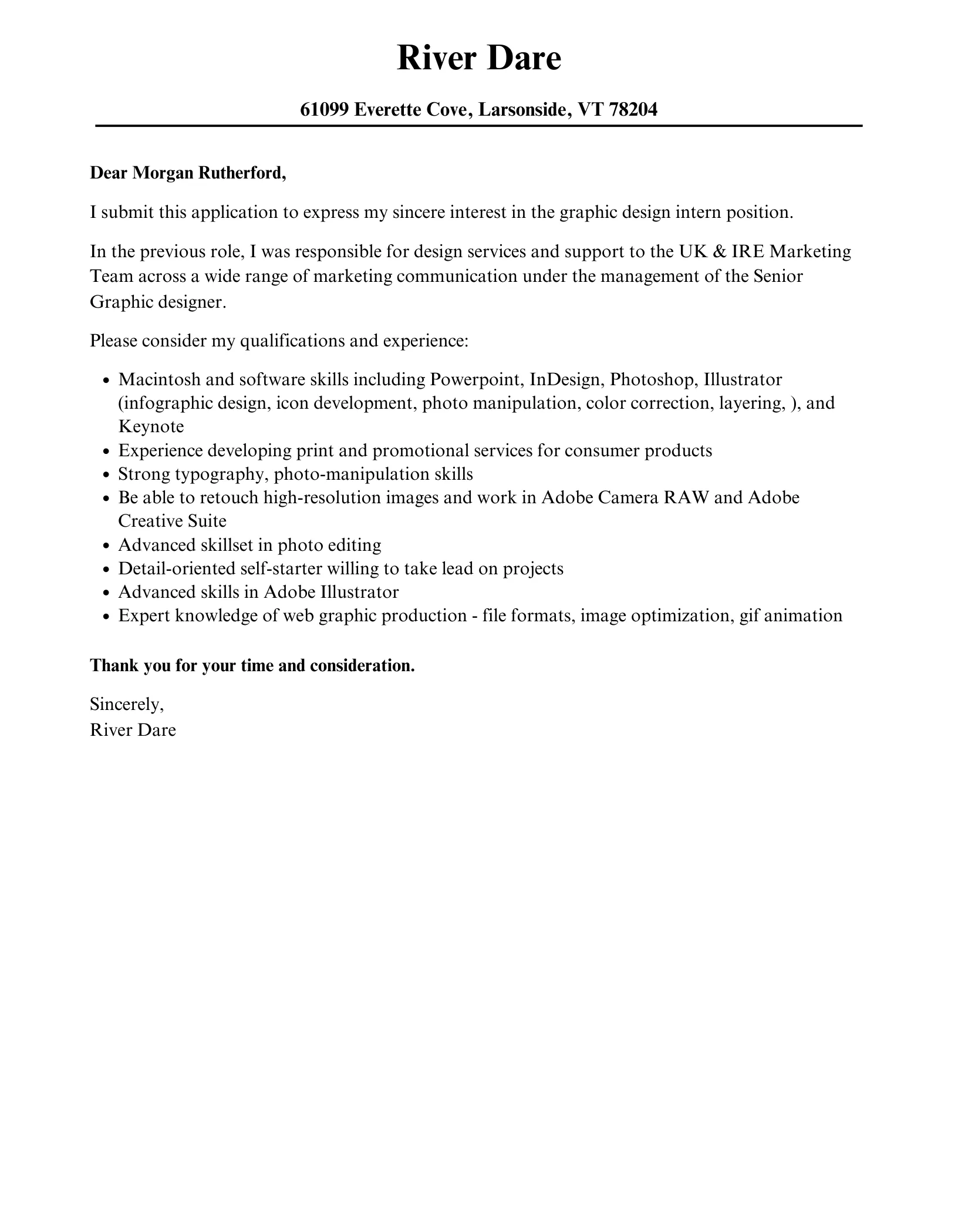Highlighting Your Skills for a Graphic Design Internship
A graphic design internship is a fantastic opportunity to kickstart your career, and your cover letter is your first chance to make a strong impression. This section will delve into the essential skills you should showcase to grab the attention of potential employers. Remember, the goal is to paint a picture of your capabilities and demonstrate how you can contribute to their team. Start by identifying the skills most relevant to the internship description. If the role requires proficiency in Adobe Photoshop, Illustrator, or InDesign, make sure those are prominently displayed. Similarly, highlight any experience with typography, layout design, branding, or web design, depending on the position’s focus. Be specific, providing examples of how you’ve utilized these skills in previous projects. A well-crafted cover letter goes beyond just listing skills; it shows how you apply them to solve design challenges. Don’t just say you know Photoshop; explain how you used it to create a compelling marketing campaign or how you utilized your skills in color theory to improve the visual appeal of a website.
Showcasing Relevant Software Proficiency
In today’s digital landscape, proficiency in design software is non-negotiable. Your cover letter should clearly state the software you are adept at using. This isn’t about just listing programs; it’s about demonstrating mastery. Mention your experience with industry-standard tools such as Adobe Creative Suite (Photoshop, Illustrator, InDesign), Sketch, Figma, or other relevant software. When possible, provide context by explaining how you’ve used these tools. For example, you might say, ‘Proficient in Adobe Illustrator, I used it to create vector illustrations for a rebranding project.’ The aim is to show that you understand the software and can use it to produce high-quality designs. Moreover, if you have experience with any specialized software related to the specific internship (e.g., UX design tools like Figma or prototyping software), be sure to highlight that. This demonstrates that you’re not only skilled but also adaptable and prepared to learn new tools.
Demonstrating Design Principles Knowledge
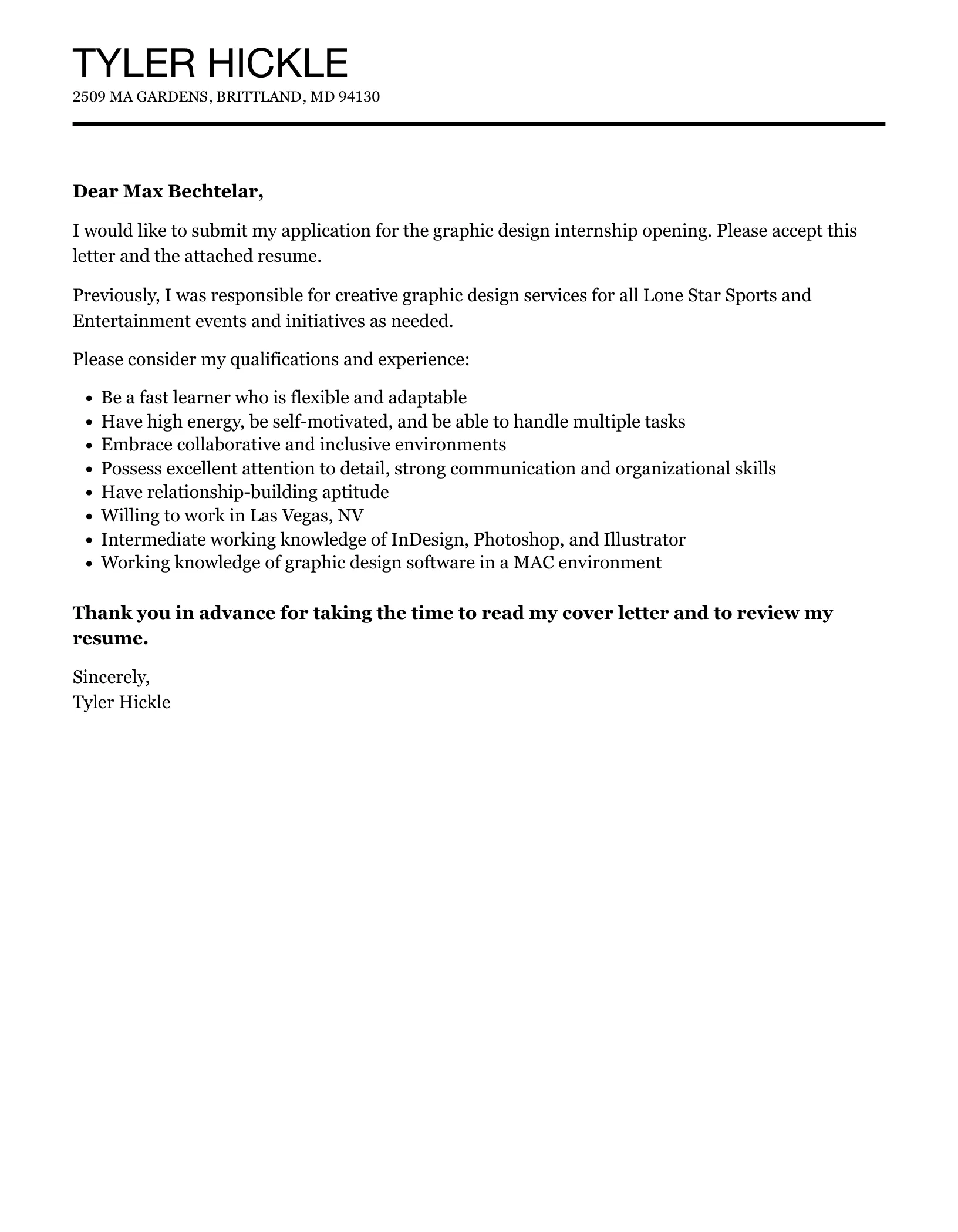
Technical skills are important, but a deep understanding of design principles is what truly separates a good designer from a great one. In your cover letter, showcase your knowledge of key design principles. Explain how you incorporate these principles into your work to achieve specific results. For example, discuss your understanding of typography (font pairing, readability), color theory (color palettes, contrast), layout (grid systems, balance), and visual hierarchy. Explain how you use these to communicate your design intent. Consider including a brief example of how you applied these principles in a past project. For instance, you could say, ‘I applied principles of visual hierarchy to create a compelling infographic that guided the viewer’s eye through the information.’ Demonstrating a solid grasp of design principles shows employers that you can create designs that are not only visually appealing but also effective in their communication goals.
Emphasizing Your Portfolio’s Strength
Your design portfolio is your most valuable asset, and your cover letter should act as its teaser. Make sure your cover letter highlights the projects in your portfolio most relevant to the internship. Don’t just say you have a portfolio; explicitly mention the types of projects included (e.g., branding, web design, illustrations) and the specific design challenges you tackled. Use strong verbs to describe your work, like ‘designed,’ ‘developed,’ ‘created,’ or ‘implemented.’ A well-crafted cover letter will guide the reader toward the most impressive parts of your portfolio. Consider mentioning a couple of key projects and briefly explaining your role and the outcome. For example, “In my rebranding project for a local cafe, I designed a new logo and brand guidelines.” The goal is to make the potential employer want to see more of your work.
Structuring Your Portfolio for Impact
The way you structure your design portfolio is just as important as the work it contains. In your cover letter, you can indirectly highlight your portfolio’s structure. If your portfolio is well-organized and easy to navigate, mention that it’s designed to showcase your versatility and skills. A clear, concise portfolio with relevant projects will speak volumes about your organizational skills and your ability to present your work professionally. Make sure your portfolio is easy to access, whether online or as a PDF. Provide a direct link to your online portfolio, or make sure your PDF portfolio is easy to download and view. Consider mentioning the key features or the design elements of your portfolio to grab the attention of the hiring manager. Make sure your portfolio is updated regularly to keep your best work available.
Curating the Best Projects
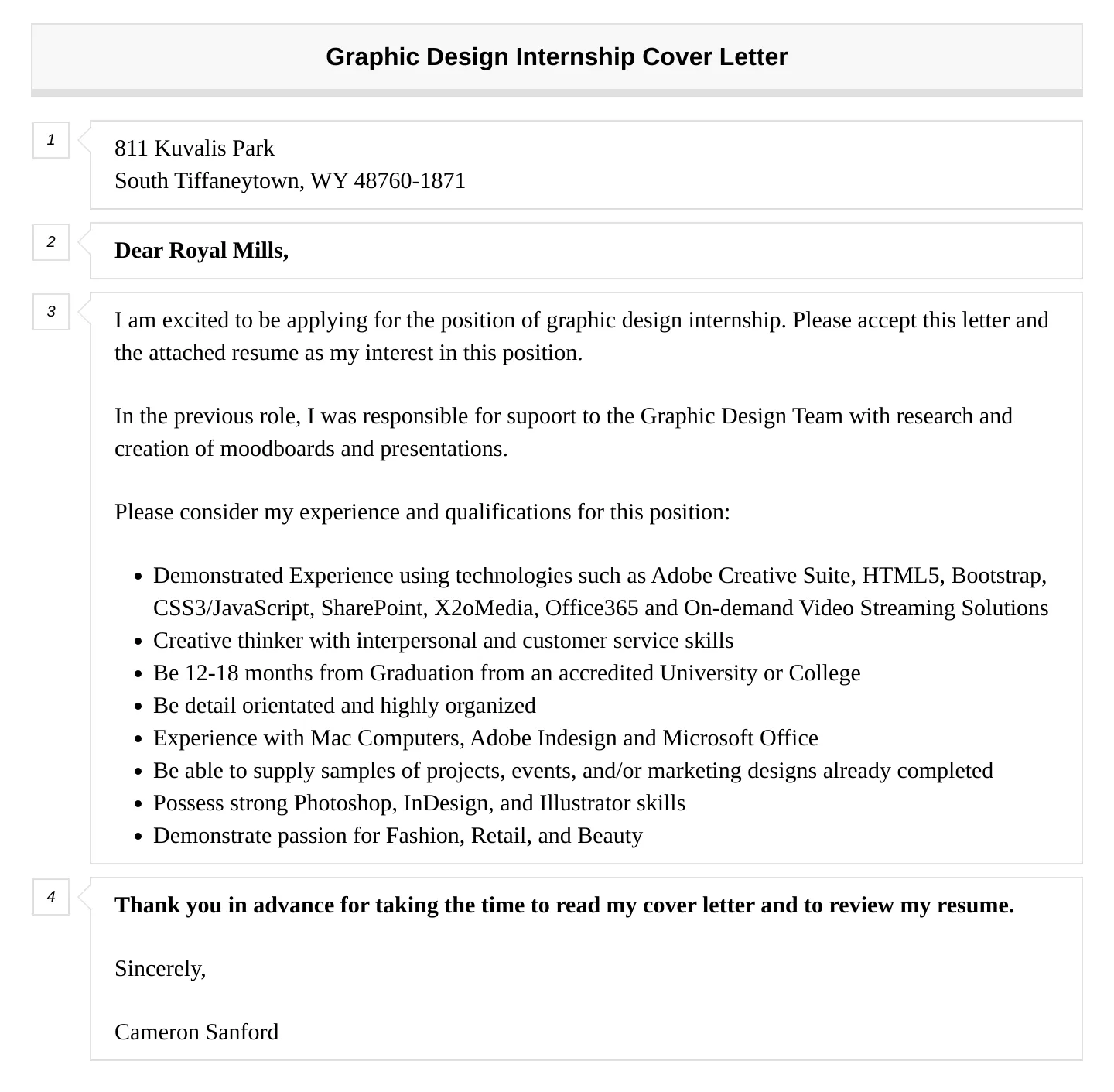
Your portfolio should only include your best work. The projects you choose to include should demonstrate your skills and be relevant to the internship you’re applying for. In your cover letter, you can emphasize this by briefly mentioning the projects that align with the internship requirements. For example, if the internship focuses on web design, prioritize highlighting your web design projects in your cover letter. Avoid including projects that are not directly relevant to the role, as they may distract from your core skills. Ensure that your portfolio is a curated collection of your strongest pieces, and demonstrate how these designs align with the needs of the company. Be strategic, and show that you have the ability to select the work that most effectively shows your strengths. Use your cover letter to help your portfolio stand out.
Quantifying Your Achievements
Instead of simply stating your skills and experience, try to quantify your achievements. Use numbers, data, and metrics to demonstrate the impact of your work. This approach makes your accomplishments more tangible and persuasive. Whenever possible, use metrics to show how your design work contributed to specific outcomes. For instance, instead of saying ‘Improved website design,’ you could write ‘Increased website conversion rates by 15% through design improvements.’ This level of detail provides concrete proof of your abilities and demonstrates that you understand the business impact of your work. If you’ve worked on projects that led to measurable results, be sure to include these figures in your cover letter. Showing that you can generate positive results for the company will make you a more attractive candidate.
Measuring Success in Previous Roles or Projects
Quantifying your accomplishments is about more than just providing numbers. It involves understanding how your work contributed to the success of your previous roles or projects. Think about the metrics that matter most. Did your designs lead to increased sales, better user engagement, or improved brand recognition? For example, if you designed a logo, mention how it improved brand recognition. Did your marketing campaign increase website traffic? For instance, you might say, ‘Developed a social media campaign that increased website traffic by 20%.’ Think about the specific results of each project and the metrics you can use to present them. The aim is to demonstrate the real-world impact of your design skills. The hiring manager will be more interested in your ability to provide tangible results.
Using Numbers to Showcase Your Impact
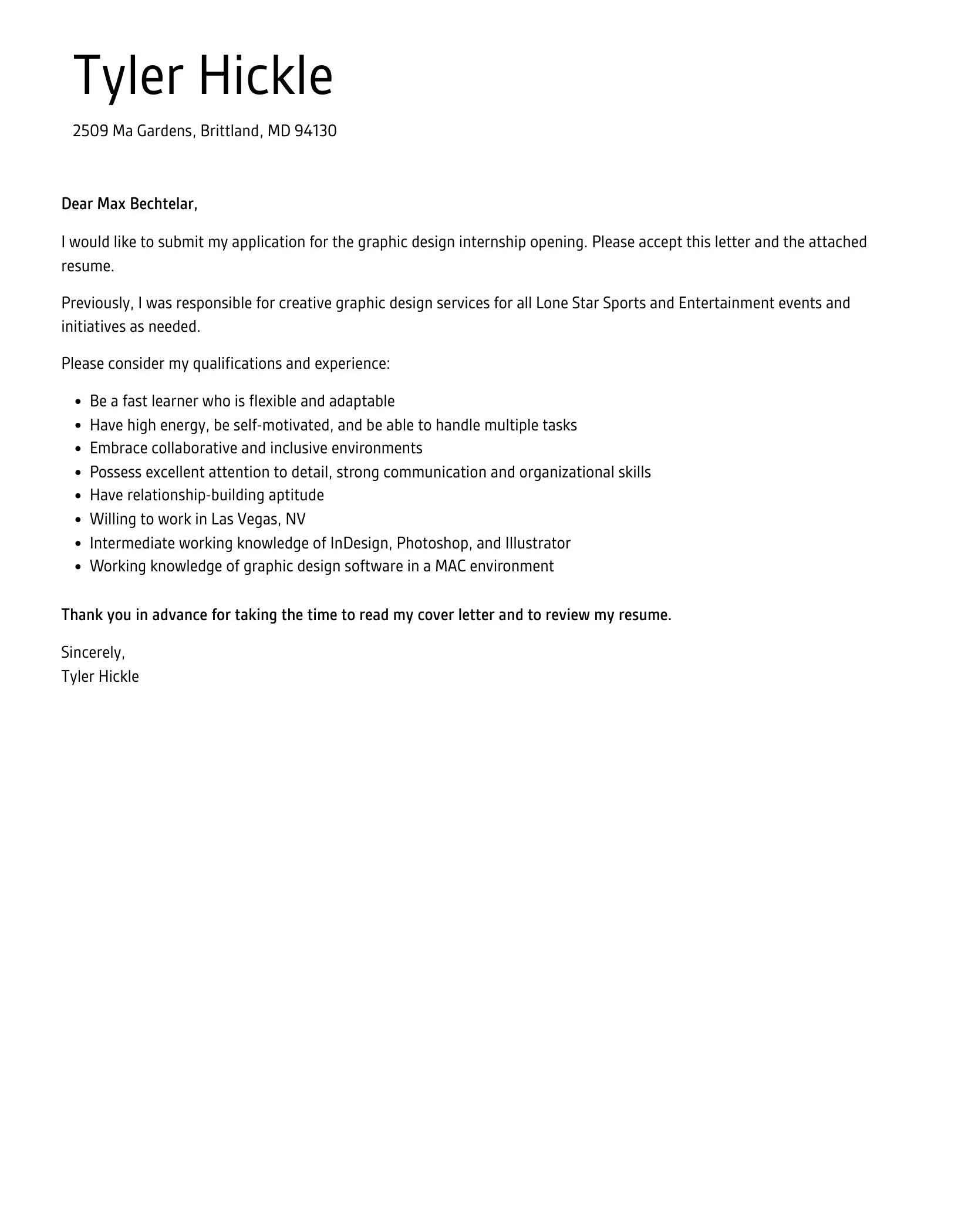
Using numbers to showcase your impact is a powerful way to demonstrate your value. Always include specific metrics. Instead of saying ‘Created many social media graphics’, say ‘Designed 50+ social media graphics that reached over 10,000 users.’ Be specific. If you designed a website, explain how it improved user engagement or reduced bounce rates. Did you increase website traffic? Did you improve user satisfaction scores? Did your designs lead to increased sales? For example, you might say, ‘Redesigned a landing page, which resulted in a 25% increase in conversion rates.’ Be precise and show the concrete results of your design work. This will set you apart from other applicants. The best way to measure your achievements is to use the right numbers.
Expressing Enthusiasm and Professionalism
Your cover letter should convey your enthusiasm and professionalism. Show that you are genuinely interested in the graphic design internship and the company. This means doing your research and understanding the company’s mission, values, and the type of work they do. Tailor your cover letter to the specific role. Show your excitement about the internship, and what you hope to achieve by working there. Mention any specific projects, initiatives, or aspects of the company’s work that resonate with you. This will show that you are serious about the opportunity and ready to commit to it. Make sure your letter is well-written, free of errors, and formatted professionally. Take pride in your cover letter, and make sure that it reflects your professionalism.
Conveying Your Passion for Design
Let your passion for design shine through in your cover letter. Explain why you are passionate about graphic design and why you are seeking an internship. Share your design philosophy and your enthusiasm for continuous learning and growth in the field. Mention any design trends or specific areas of graphic design that excite you. Your passion will help you stand out. It shows your enthusiasm, and shows your commitment. Don’t be afraid to express your creativity and your excitement. This is your chance to let your personality shine. Your cover letter should be a reflection of your dedication and your love for graphic design. Make sure your passion is clear and contagious. For instance, you could state that you are excited about current design trends and would love to work alongside experienced designers.
Tailoring Your Letter to the Internship
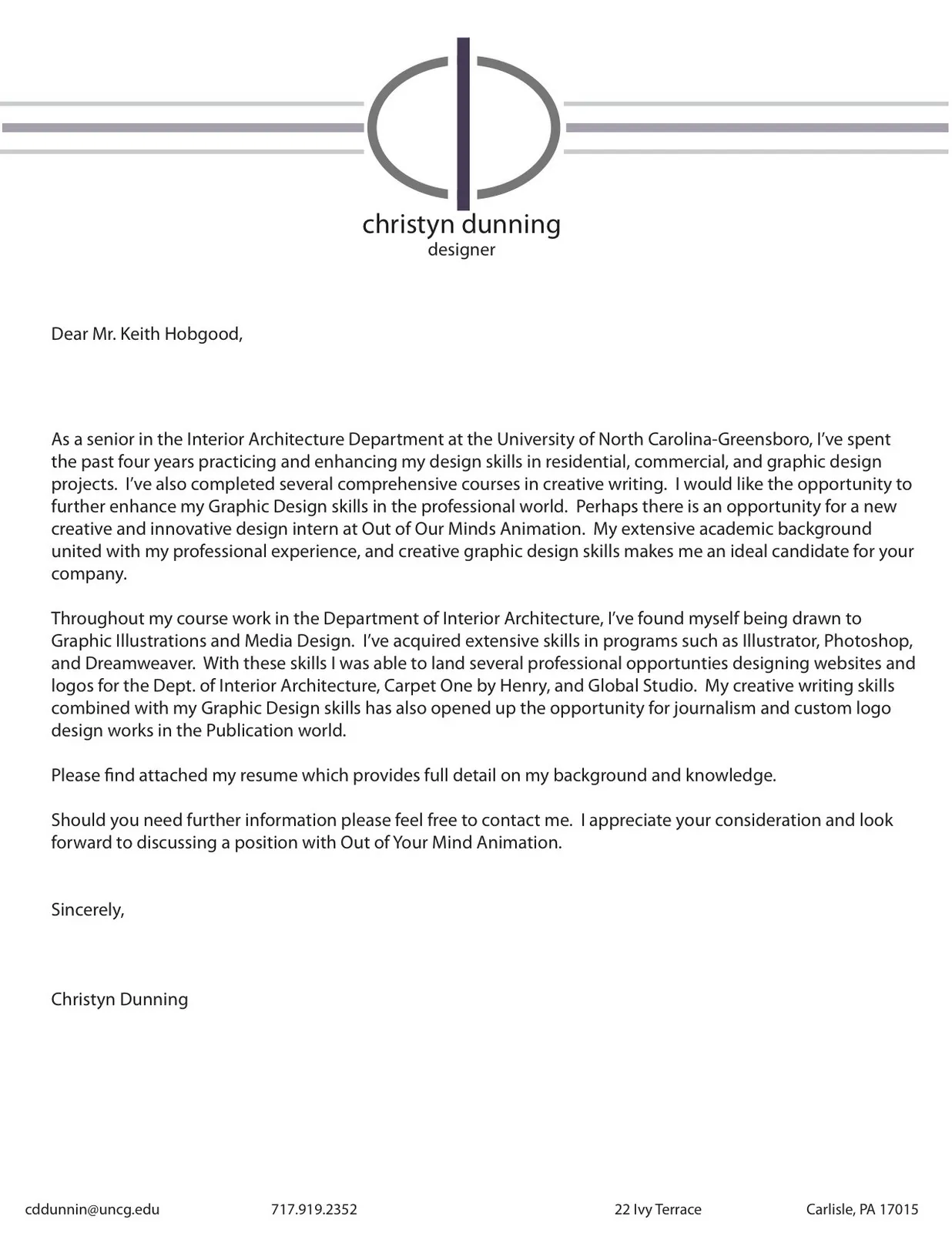
One of the most effective strategies is to tailor your cover letter to the specific internship you are applying for. Read the job description carefully, and mention any specific skills or experiences they require. Show the hiring manager that you have taken the time to understand their needs. Research the company and customize your cover letter to align with its goals and values. Show that you understand the company’s mission, values, and brand. Mention the projects that are most relevant to the internship. Emphasize the elements of the internship that make you excited. By tailoring your letter, you show that you’re not just sending out a generic application, but that you are genuinely interested in the specific opportunity. This approach significantly increases your chances of getting the internship.
